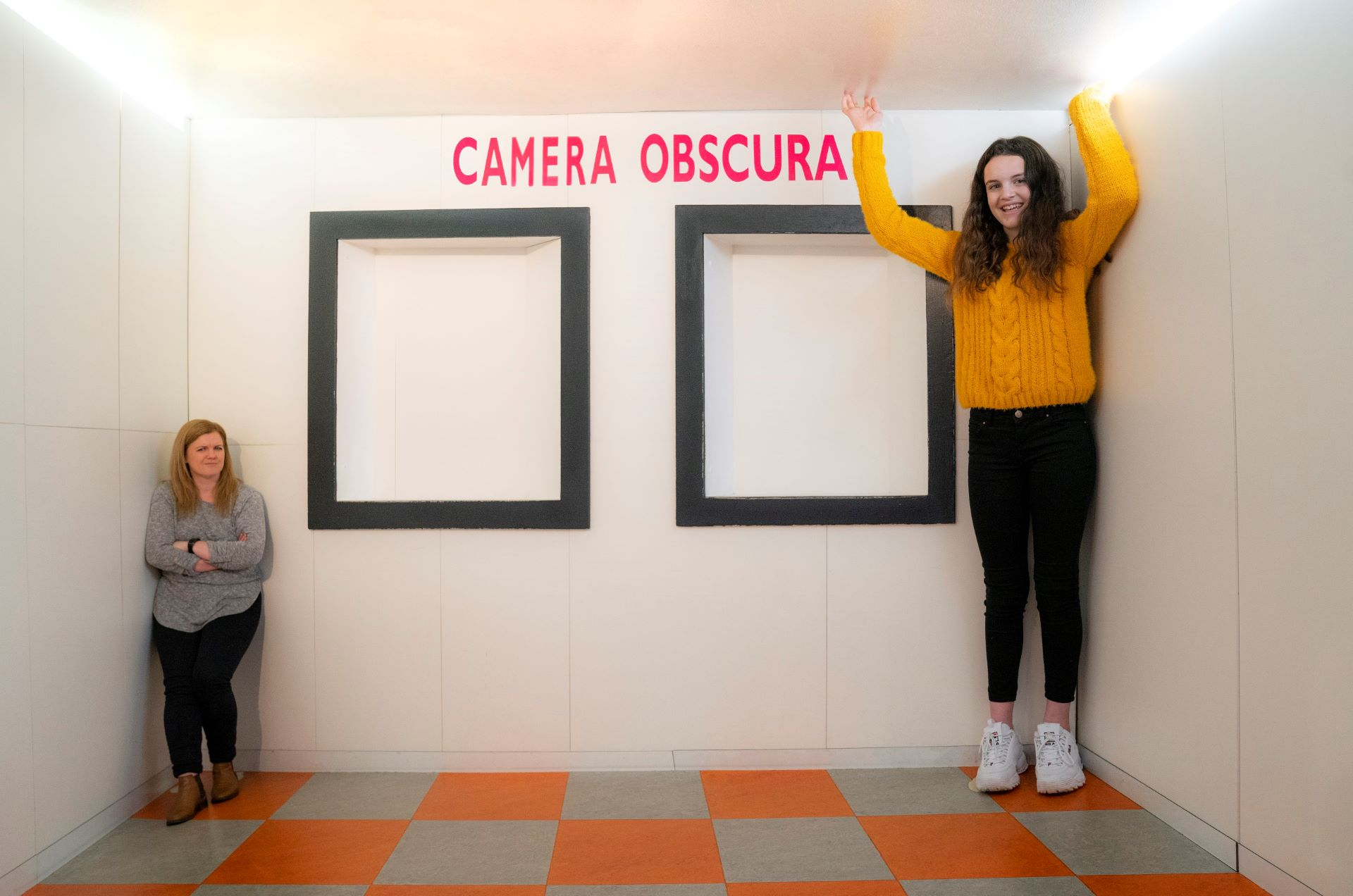L8: Depth Perception
1/20
There's no tags or description
Looks like no tags are added yet.
Name | Mastery | Learn | Test | Matching | Spaced |
|---|
No study sessions yet.
21 Terms
Why do our eyes face the same direction?
Problem with images, don’t tell you how far they are
Flat image so must be something in the context
By having essentially two views of the same world can you ‘maths’ to understand depth in our world
Stereopsis - Retinal Disparity
Our eyes have two different views of the world
The use of these two views to get depth is termed “stereopsis”
Any object not on the horopter (the locus of points in space that have the same disparity as fixation) has a retinal disparity
If we can calculate this retinal disparity we know how far the object is away from our ‘horopter’
What should you see if you put different images in the left and right eye
Should see depth
What is the usual object distance for getting two different images in each eye and what is the rationale behind it
Eyes are about 6cm apart, so object distance usually 6cm apart
Random dot steregrams: Bela Julesz (1961)
Two patterns of random dots presented to each eye
Cut square of random dots out and stick it at different depth
People see the square
Conclusion
Depth must precede form
Without solving the depth problem, there is no square
Autostereograms - Magic Eye
A way of getting a stereogram from one image
Normally one image in each eye
Trick to get one eye looking at one stripe, the other eye looking at the other stripe
Autosterogram is a 2D image that tricks the brain that it is a 3D image
What is the first place information from two eyes comes together
V1
What are many cells in the V1 area
Disparity sensitive
Around what percentage of people have problems with their stereovision
10%
What can cause stereoblindness
Problems in early life (e.g. squint) then the brain doesn’t learn to put the information from the two eyes together and this cue to depth is lost
Can still perceive depth with one eye, so what are some other depth cues we use?
Motion parallax
Pictorial cues to depth
Size
Texture gradients
Shape and Shading
Cast shadows
Motion parallax
Objects that are closer appear to be moving faster than objects that are further away
Why cats bob up and down when close to prey, trying to use motion parallax to gauge depth
Pictorial cues to depth
Despite a lack of stereo cues and lack of motion we can still see depth in pictures
We use a lot of cues such as:
Interposition
Height
Size
Perspective
Shadows
Size
For a given object size it will cast a smaller and smaller retinal image as it gets further away
Texture gradients
Smaller cobblestone looks further away
Shape and Shading
Ramachandran (1988)
Tend to see the middle element as sticking out
Brain makes the assumption that light comes from the top… but top of what? The world of your head
If light coming from the top, expect circles that are light at the top to be ‘sticking out’ and those with light at the bottom to be sticking in
Cast shadows
Kerten et al (1997)
The shadow of an object, ball takes same trajectory only shadow cast differs
Emmert’s law (Distortions due to misplaced depth)
Images of same retinal size will appear different sizes when located at different distances (linear relationship)
Example of an illusion from size contancy
Ames room

What point in our vision DOESN’T gave retinal disparity
The point we are looking at
What do individuals with a lazy eye struggle with
Stereopsis